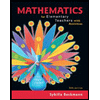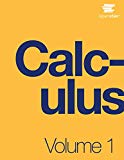
EP COLL.MATH.F/BUS,ECON..-MYLAB ACCESS
14th Edition
ISBN: 9780135963302
Author: Barnett
Publisher: PEARSON CO
expand_more
expand_more
format_list_bulleted
Concept explainers
Question
Chapter 10.2, Problem 2E
To determine
To solve: The variable
Expert Solution & Answer
Want to see the full answer?
Check out a sample textbook solution
Students have asked these similar questions
Let R be the region bounded by the following curves. Let S be the solid generated when R is revolved about the given axis. If possible, find the volume of S by both the disk/washer and shell methods. Check that your results agree
y = (x-4) - 1 x = 0, y = 63 revolved about the y-axis
Set up the integral(s) that gives the volume of the solid as a single integral if possible using the disk/washer method. Use increasing limits of integration. Select the correct choice below and fill in any answer boxes within your choice
DA SOD dy + SO
UB.
dy (Type exact answers.)
[ C) dy (Type exact answers )
Set up the integral(s) that gives the volume of the solid as a single integral if possible using the shell method. Use increasing limits of integration. Select the correct choice below and fill in any answer boxes within your choice.
OA.
dx (Type exact answers.)
OB.
dx+
SO
dx (Type exact answers.)
The volume of the solid is
(Type an exact answer.)
An airline owns an aging fleet of Boeing 737 jet airplanes. It is considering a major purchase of up to 17 new Boeing model 787 and 767 jets. The decision must take into account numerous cost and capability factors, including the following: (1) the airline can finance up to $1.6 billion in purchases; (2) each Boeing 787 will cost $80 million, and each Boeing 767 will cost $110 million; (3) at least one-third of the planes purchased should be the longer-range 787; (4) the annual maintenance budget is to be no more than $8 million; (5) the annual maintenance cost per 787 is estimated to be $800,000, and it is $500,000 for each 767; and (6) each 787 can carry 125,000 passengers per year, whereas each 767 can fly 81,000 passengers annually. Formulate this as an integer programming problem to maximize the annual passenger-carrying capability. What category of integer programming problem is this? Solve this problem
A drag racer accelerates at a(t) = 96 ft/s². Assume that v(0) = 0 and s(0) = 0.
a. Determine the position function for t≥ 0.
b. How far does the racer travel in the first 6 s?
c. At this rate, how long will it take the racer to travel
1
mi?
3
d. How long will it take the racer to travel 300 ft?
e. How far has the racer traveled when it reaches a speed of 175 ft/s?
a. The position function for t20 is s(t) =
b. In the first 6 s, the racer travels
ft.
(Simplify your answer. Type an integer or decimal rounded to three decimal places as needed.)
1
c. At this rate, it will take the racer s to travel
mi
3
(Do not round until the final answer. Then round to three decimal places as needed.)
d. It will take the racer
s to travel 300 ft.
(Do not round until the final answer. Then round to three decimal places as needed.)
ft.
e. When the racer reaches a speed of 175 ft/s, it has traveled
(Do not round until the final answer. Then round to three decimal places as needed.)
Chapter 10 Solutions
EP COLL.MATH.F/BUS,ECON..-MYLAB ACCESS
Ch. 10.1 - Matched Problem 1 What amount (to the nearest...Ch. 10.1 - Prob. 2MPCh. 10.1 - Matched Problem 3 How long will it take an...Ch. 10.1 - Prob. 4MPCh. 10.1 - Explore and Discuss 1
You are considering three...Ch. 10.1 - Prob. 1ECh. 10.1 - Prob. 2ECh. 10.1 - In Problems 1–8, solve for the variable to two...Ch. 10.1 - Prob. 4ECh. 10.1 - In Problems 1–8, solve for the variable to two...
Ch. 10.1 - Prob. 6ECh. 10.1 - In Problems 1–8, solve for the variable to two...Ch. 10.1 - Prob. 8ECh. 10.1 - Use a calculator to evaluate A to the nearest cent...Ch. 10.1 - Prob. 10ECh. 10.1 - 11. If $6,000 is invested at 10% compounded...Ch. 10.1 - Prob. 12ECh. 10.1 - In Problems 13–20, solve for t or r to two decimal...Ch. 10.1 - Prob. 14ECh. 10.1 - In Problems 13–20, solve for t or r to two decimal...Ch. 10.1 - Prob. 16ECh. 10.1 - In Problems 13–20, solve for t or r to two decimal...Ch. 10.1 - In Problems 13–20, solve for t or r to two decimal...Ch. 10.1 - In Problems 13–20, solve for t or r to two decimal...Ch. 10.1 - Prob. 20ECh. 10.1 - Prob. 21ECh. 10.1 - Prob. 22ECh. 10.1 - Prob. 23ECh. 10.1 - Prob. 24ECh. 10.1 - Prob. 25ECh. 10.1 - Prob. 26ECh. 10.1 - 27. Continuous compound interest. Provident Bank...Ch. 10.1 - Prob. 28ECh. 10.1 - 29. Present value. A note will pay $20,000 at...Ch. 10.1 - Prob. 30ECh. 10.1 - Prob. 31ECh. 10.1 - Prob. 32ECh. 10.1 - Prob. 33ECh. 10.1 - Prob. 34ECh. 10.1 - 35. Doubling time. How long will it take money to...Ch. 10.1 - Prob. 36ECh. 10.1 - Prob. 37ECh. 10.1 - Prob. 38ECh. 10.1 - Prob. 39ECh. 10.1 - Prob. 40ECh. 10.1 - 41. Doubling times.
Show that the doubling time t...Ch. 10.1 - Prob. 42ECh. 10.1 - Prob. 43ECh. 10.1 - Prob. 44ECh. 10.1 - Prob. 45ECh. 10.1 - Prob. 46ECh. 10.1 - Prob. 47ECh. 10.1 - Prob. 48ECh. 10.1 - Prob. 49ECh. 10.1 - Prob. 50ECh. 10.2 - Matched Problem 1 Find f′(x) for
f(x) = 4ex + 8x2...Ch. 10.2 - Prob. 2MPCh. 10.2 - Prob. 3MPCh. 10.2 - Prob. 4MPCh. 10.2 - Prob. 5MPCh. 10.2 - Prob. 6MPCh. 10.2 - Prob. 1EDCh. 10.2 - Prob. 2EDCh. 10.2 - Prob. 1ECh. 10.2 - Prob. 2ECh. 10.2 - Prob. 3ECh. 10.2 - Prob. 4ECh. 10.2 - Prob. 5ECh. 10.2 - Prob. 6ECh. 10.2 - Prob. 7ECh. 10.2 - Prob. 8ECh. 10.2 - In Problems 7–12, use logarithmic properties to...Ch. 10.2 - In Problems 7–12, use logarithmic properties to...Ch. 10.2 - Prob. 11ECh. 10.2 - Prob. 12ECh. 10.2 - In Problems 13–30, find f′(x).
13. f(x) = 5ex + 3x...Ch. 10.2 - Prob. 14ECh. 10.2 - Prob. 15ECh. 10.2 - In Problems 13–30, find f′(x).
16. f(x) = 6 ln x −...Ch. 10.2 - In Problems 13–30, find f′(x).
17. f(x) = x3 −...Ch. 10.2 - Prob. 18ECh. 10.2 - Prob. 19ECh. 10.2 - Prob. 20ECh. 10.2 - In Problems 13–30, find f′(x).
21. f(x) = ln x3
Ch. 10.2 - Prob. 22ECh. 10.2 - Prob. 23ECh. 10.2 - Prob. 24ECh. 10.2 - In Problems 13–30, find f′(x).
25. f(x) = ln x2 +...Ch. 10.2 - Prob. 26ECh. 10.2 - Prob. 27ECh. 10.2 - Prob. 28ECh. 10.2 - In Problems 13–30, find f′(x).
29. f(x) = xxe
Ch. 10.2 - Prob. 30ECh. 10.2 - Prob. 31ECh. 10.2 - Prob. 32ECh. 10.2 - In Problems 31–38, find the equation of the line...Ch. 10.2 - Prob. 34ECh. 10.2 - In Problems 31–38, find the equation of the line...Ch. 10.2 - Prob. 36ECh. 10.2 - In Problems 31–38, find the equation of the line...Ch. 10.2 - In Problems 31–38, find the equation of the line...Ch. 10.2 - Prob. 39ECh. 10.2 - Prob. 40ECh. 10.2 - Prob. 41ECh. 10.2 - Prob. 42ECh. 10.2 - In Problems 43–46, first use appropriate...Ch. 10.2 - In Problems 43–46, first use appropriate...Ch. 10.2 - In Problems 43–46, first use appropriate...Ch. 10.2 - In Problems 43–46, first use appropriate...Ch. 10.2 - In Problems 47–58, find for the indicated...Ch. 10.2 - Prob. 48ECh. 10.2 - In Problems 47–58, find for the indicated...Ch. 10.2 - Prob. 50ECh. 10.2 - In Problems 47–58, find for the indicated...Ch. 10.2 - Prob. 52ECh. 10.2 - In Problems 47–58, find for the indicated...Ch. 10.2 - Prob. 54ECh. 10.2 - In Problems 47–58, find for the indicated...Ch. 10.2 - Prob. 56ECh. 10.2 - Prob. 57ECh. 10.2 - In Problems 47–58, find for the indicated...Ch. 10.2 - Prob. 59ECh. 10.2 - Prob. 60ECh. 10.2 - Prob. 61ECh. 10.2 - Prob. 62ECh. 10.2 - Prob. 63ECh. 10.2 - Prob. 64ECh. 10.2 - 65. Explain why .
Ch. 10.2 - Prob. 66ECh. 10.2 - 67. Salvage value. The estimated salvage value S...Ch. 10.2 - Prob. 68ECh. 10.2 - Prob. 69ECh. 10.2 - Prob. 70ECh. 10.2 - 71. Blood pressure. An experiment was set up to...Ch. 10.2 - Prob. 72ECh. 10.2 - Prob. 73ECh. 10.2 - Prob. 74ECh. 10.2 - Prob. 75ECh. 10.2 - 76. Continuous compound interest. An investment of...Ch. 10.3 - Matched Problem 1 Use two different methods to...Ch. 10.3 - Prob. 2MPCh. 10.3 - Prob. 3MPCh. 10.3 - Prob. 4MPCh. 10.3 - Prob. 5MPCh. 10.3 - Prob. 6MPCh. 10.3 - Prob. 1EDCh. 10.3 - Prob. 2EDCh. 10.3 - Prob. 1ECh. 10.3 - Prob. 2ECh. 10.3 - Prob. 3ECh. 10.3 - Prob. 4ECh. 10.3 - Prob. 5ECh. 10.3 - Prob. 6ECh. 10.3 - Prob. 7ECh. 10.3 - Prob. 8ECh. 10.3 - In Problems 9–34, find f′(x) and simplify.
9. f(x)...Ch. 10.3 - Prob. 10ECh. 10.3 - Prob. 11ECh. 10.3 - Prob. 12ECh. 10.3 - In Problems 9–34, find f′(x) and simplify.
13.
Ch. 10.3 - Prob. 14ECh. 10.3 - Prob. 15ECh. 10.3 - Prob. 16ECh. 10.3 - In Problems 9–34, find f′(x) and simplify.
17....Ch. 10.3 - Prob. 18ECh. 10.3 - In Problems 9–34, find f′(x) and simplify.
19....Ch. 10.3 - Prob. 20ECh. 10.3 - In Problems 9–34, find f′(x) and simplify.
21....Ch. 10.3 - Prob. 22ECh. 10.3 - Prob. 23ECh. 10.3 - Prob. 24ECh. 10.3 - In Problems 9–34, find f′(x) and simplify.
25.
Ch. 10.3 - Prob. 26ECh. 10.3 - Prob. 27ECh. 10.3 - Prob. 28ECh. 10.3 - In Problems 9–34, find f′(x) and simplify.
29.
Ch. 10.3 - In Problems 9–34, find f′(x) and simplify.
30.
Ch. 10.3 - Prob. 31ECh. 10.3 - Prob. 32ECh. 10.3 - In Problems 9–34, find f′(x) and simplify.
33.
Ch. 10.3 - Prob. 34ECh. 10.3 - Prob. 35ECh. 10.3 - Prob. 36ECh. 10.3 - In Problems 35–46, find h′(x), where f(x) is an...Ch. 10.3 - Prob. 38ECh. 10.3 - Prob. 39ECh. 10.3 - Prob. 40ECh. 10.3 - In Problems 35–46, find h′(x), where f(x) is an...Ch. 10.3 - Prob. 42ECh. 10.3 - Prob. 43ECh. 10.3 - Prob. 44ECh. 10.3 - In Problems 35–46, find h′(x), where f(x) is an...Ch. 10.3 - Prob. 46ECh. 10.3 - In Problems 47–56, find the indicated derivatives...Ch. 10.3 - Prob. 48ECh. 10.3 - In Problems 47–56, find the indicated derivatives...Ch. 10.3 - Prob. 50ECh. 10.3 - In Problems 47–56, find the indicated derivatives...Ch. 10.3 - Prob. 52ECh. 10.3 - In Problems 47–56, find the indicated derivatives...Ch. 10.3 - In Problems 47–56, find the indicated derivatives...Ch. 10.3 - Prob. 55ECh. 10.3 - In Problems 47–56, find the indicated derivatives...Ch. 10.3 - In Problems 57–60:
Find f′(x) using the quotient...Ch. 10.3 - Prob. 58ECh. 10.3 - Prob. 59ECh. 10.3 - Prob. 60ECh. 10.3 - In Problems 61–66, find f′(x) and find the...Ch. 10.3 - Prob. 62ECh. 10.3 - Prob. 63ECh. 10.3 - Prob. 64ECh. 10.3 - In Problems 61–66, find f′(x) and find the...Ch. 10.3 - Prob. 66ECh. 10.3 - In Problems 67–70, find f′(x) and find the...Ch. 10.3 - Prob. 68ECh. 10.3 - In Problems 67–70, find f′(x) and find the...Ch. 10.3 - Prob. 70ECh. 10.3 - Prob. 71ECh. 10.3 - Prob. 72ECh. 10.3 - In Problems 71–74, find f′(x) in two ways: (1)...Ch. 10.3 - In Problems 71–74, find f′(x) in two ways: (1)...Ch. 10.3 - In Problems 75–92, find each indicated derivative...Ch. 10.3 - In Problems 75–92, find each indicated derivative...Ch. 10.3 - In Problems 75–92, find each indicated derivative...Ch. 10.3 - Prob. 78ECh. 10.3 - In Problems 75–92, find each indicated derivative...Ch. 10.3 - Prob. 80ECh. 10.3 - In Problems 75–92, find each indicated derivative...Ch. 10.3 - In Problems 75–92, find each indicated derivative...Ch. 10.3 - In Problems 75–92, find each indicated derivative...Ch. 10.3 - Prob. 84ECh. 10.3 - In Problems 75–92, find each indicated derivative...Ch. 10.3 - Prob. 86ECh. 10.3 - In Problems 75–92, find each indicated derivative...Ch. 10.3 - Prob. 88ECh. 10.3 - In Problems 75–92, find each indicated derivative...Ch. 10.3 - Prob. 90ECh. 10.3 - In Problems 75–92, find each indicated derivative...Ch. 10.3 - In Problems 75–92, find each indicated derivative...Ch. 10.3 - 93. Sales analysis. The total sales S (in...Ch. 10.3 - Prob. 94ECh. 10.3 - Prob. 95ECh. 10.3 - 96. Price–supply equation. According to economic...Ch. 10.3 - 97. Medicine. A drug is injected into a patient’s...Ch. 10.3 - Prob. 98ECh. 10.4 - Matched Problem 1 Let f (u) = 2u and g(x) = ex....Ch. 10.4 - Matched Problem 2 Write each function as a...Ch. 10.4 - Prob. 3MPCh. 10.4 - Prob. 4MPCh. 10.4 - Matched Problem 5 For y = h(x) = [ln(1 + ex) ]3,...Ch. 10.4 - Prob. 6MPCh. 10.4 - Prob. 1EDCh. 10.4 - Prob. 2EDCh. 10.4 - Prob. 1ECh. 10.4 - Prob. 2ECh. 10.4 - Prob. 3ECh. 10.4 - Prob. 4ECh. 10.4 - Prob. 5ECh. 10.4 - Prob. 6ECh. 10.4 - Prob. 7ECh. 10.4 - Prob. 8ECh. 10.4 - In Problems 9–16, replace ? with an expression...Ch. 10.4 - Prob. 10ECh. 10.4 - Prob. 11ECh. 10.4 - Prob. 12ECh. 10.4 - Prob. 13ECh. 10.4 - Prob. 14ECh. 10.4 - Prob. 15ECh. 10.4 - Prob. 16ECh. 10.4 - In Problems 17–34, find f′(x) and simplify.
17....Ch. 10.4 - Prob. 18ECh. 10.4 - In Problems 17–34, find f′(x) and simplify.
19....Ch. 10.4 - Prob. 20ECh. 10.4 - In Problems 17–34, find f′(x) and simplify.
21....Ch. 10.4 - In Problems 17–34, find f′(x) and simplify.
22....Ch. 10.4 - Prob. 23ECh. 10.4 - Prob. 24ECh. 10.4 - Prob. 25ECh. 10.4 - In Problems 17–34, find f′(x) and simplify.
26.
Ch. 10.4 - In Problems 17–34, find f′(x) and simplify.
27....Ch. 10.4 - In Problems 17–34, find f′(x) and simplify.
28....Ch. 10.4 - In Problems 17–34, find f′(x) and simplify.
29....Ch. 10.4 - In Problems 17–34, find f′(x) and simplify.
30....Ch. 10.4 - Prob. 31ECh. 10.4 - In Problems 17–34, find f′(x) and simplify.
32....Ch. 10.4 - Prob. 33ECh. 10.4 - Prob. 34ECh. 10.4 - In Problems 35–40, find f′(x) and the equation of...Ch. 10.4 - Prob. 36ECh. 10.4 - In Problems 35–40, find f′(x) and the equation of...Ch. 10.4 - Prob. 38ECh. 10.4 - Prob. 39ECh. 10.4 - In Problems 35–40, find f′(x) and the equation of...Ch. 10.4 - In Problems 41–56, find the indicated derivative...Ch. 10.4 - Prob. 42ECh. 10.4 - In Problems 41–56, find the indicated derivative...Ch. 10.4 - Prob. 44ECh. 10.4 - Prob. 45ECh. 10.4 - Prob. 46ECh. 10.4 - Prob. 47ECh. 10.4 - Prob. 48ECh. 10.4 - In Problems 41–56, find the indicated derivative...Ch. 10.4 - Prob. 50ECh. 10.4 - In Problems 41–56, find the indicated derivative...Ch. 10.4 - In Problems 41–56, find the indicated derivative...Ch. 10.4 - In Problems 41–56, find the indicated derivative...Ch. 10.4 - In Problems 41–56, find the indicated derivative...Ch. 10.4 - In Problems 41–56, find the indicated derivative...Ch. 10.4 - Prob. 56ECh. 10.4 - In Problems 57–62, find f′(x) and find the...Ch. 10.4 - Prob. 58ECh. 10.4 - In Problems 57–62, find f′(x) and find the...Ch. 10.4 - In Problems 57–62, find f′(x) and find the...Ch. 10.4 - In Problems 57–62, find f′(x) and find the...Ch. 10.4 - In Problems 57–62, find f (x) and find the...Ch. 10.4 - In Problems 63–68, find f′(x) and find, the...Ch. 10.4 - Prob. 64ECh. 10.4 - In Problems 63–68, find f′(x) and find, the...Ch. 10.4 - In Problems 63–68, find f′(x) and find, the...Ch. 10.4 - In Problems 63–68, find f′(x) and find, the...Ch. 10.4 - Prob. 68ECh. 10.4 - Prob. 69ECh. 10.4 - Prob. 70ECh. 10.4 - Prob. 71ECh. 10.4 - Prob. 72ECh. 10.4 - Prob. 73ECh. 10.4 - Prob. 74ECh. 10.4 - Prob. 75ECh. 10.4 - Prob. 76ECh. 10.4 - Prob. 77ECh. 10.4 - Prob. 78ECh. 10.4 - In Problems 79–90, find each derivative and...Ch. 10.4 - Prob. 80ECh. 10.4 - In Problems 79–90, find each derivative and...Ch. 10.4 - In Problems 79–90, find each derivative and...Ch. 10.4 - In Problems 79–90, find each derivative and...Ch. 10.4 - In Problems 79–90, find each derivative and...Ch. 10.4 - In Problems 79–90, find each derivative and...Ch. 10.4 - Prob. 86ECh. 10.4 - In Problems 79–90, find each derivative and...Ch. 10.4 - Prob. 88ECh. 10.4 - In Problems 79–90, find each derivative and...Ch. 10.4 - Prob. 90ECh. 10.4 - 91. Cost function. The total cost (in hundreds of...Ch. 10.4 - 92. Cost function. The total cost (in hundreds of...Ch. 10.4 - 93. Price–supply equation. The number x of bicycle...Ch. 10.4 - Prob. 94ECh. 10.4 - 95. Drug concentration. The drug concentration in...Ch. 10.4 - Prob. 96ECh. 10.4 - 97. Blood pressure and age. A research group using...Ch. 10.4 - Prob. 98ECh. 10.5 - Matched Problem 1 Graph x2 + y2 − 169 = 0, find y′...Ch. 10.5 - Prob. 2MPCh. 10.5 - Prob. 3MPCh. 10.5 - Prob. 1EDCh. 10.5 - Prob. 1ECh. 10.5 - Prob. 2ECh. 10.5 - Prob. 3ECh. 10.5 - Prob. 4ECh. 10.5 - Prob. 5ECh. 10.5 - Prob. 6ECh. 10.5 - Prob. 7ECh. 10.5 - Prob. 8ECh. 10.5 - In Problems 9–16, find y′ in two...Ch. 10.5 - Prob. 10ECh. 10.5 - Prob. 11ECh. 10.5 - Prob. 12ECh. 10.5 - Prob. 13ECh. 10.5 - Prob. 14ECh. 10.5 - Prob. 15ECh. 10.5 - Prob. 16ECh. 10.5 - In Problems 17–34, use implicit, differentiation...Ch. 10.5 - Prob. 18ECh. 10.5 - Prob. 19ECh. 10.5 - Prob. 20ECh. 10.5 - Prob. 21ECh. 10.5 - Prob. 22ECh. 10.5 - Prob. 23ECh. 10.5 - Prob. 24ECh. 10.5 - Prob. 25ECh. 10.5 - Prob. 26ECh. 10.5 - Prob. 27ECh. 10.5 - In Problems 17–34, use implicit, differentiation...Ch. 10.5 - Prob. 29ECh. 10.5 - In Problems 17–34, use implicit, differentiation...Ch. 10.5 - Prob. 31ECh. 10.5 - In Problems 17–34, use implicit, differentiation...Ch. 10.5 - Prob. 33ECh. 10.5 - Prob. 34ECh. 10.5 - Prob. 35ECh. 10.5 - Prob. 36ECh. 10.5 - Prob. 37ECh. 10.5 - Prob. 38ECh. 10.5 - In Problems 39–42, find the equation(s) of the...Ch. 10.5 - In Problems 39–42, find the equation(s) of the...Ch. 10.5 - In Problems 39–42, find the equation(s) of the...Ch. 10.5 - In Problems 39–42, find the equation(s) of the...Ch. 10.5 - 43. If xey = 1, find y′ in two ways, first by...Ch. 10.5 - Prob. 44ECh. 10.5 - In Problems 45–52, find y′ and the slope of the...Ch. 10.5 - Prob. 46ECh. 10.5 - In Problems 45–52, find y′ and the slope of the...Ch. 10.5 - Prob. 48ECh. 10.5 - In Problems 45–52, find y′ and the slope of the...Ch. 10.5 - Prob. 50ECh. 10.5 - In Problems 45–52, find y′ and the slope of the...Ch. 10.5 - Prob. 52ECh. 10.5 - 53. Find the equation(s) of the tangent line(s) at...Ch. 10.5 - Prob. 54ECh. 10.5 - Prob. 55ECh. 10.5 - Prob. 56ECh. 10.5 - 57. Price–demand equation. The number x of compact...Ch. 10.5 - 58. Price–supply equation. The number x of compact...Ch. 10.5 - Prob. 59ECh. 10.5 - Prob. 60ECh. 10.5 - Prob. 61ECh. 10.5 - Prob. 62ECh. 10.5 - Prob. 63ECh. 10.5 - Prob. 64ECh. 10.6 - Matched Problem 1 Again, a 26-foot ladder is...Ch. 10.6 - Matched Problem 2 Repeat Example 2 for the same...Ch. 10.6 - Prob. 3MPCh. 10.6 - Prob. 4MPCh. 10.6 - Prob. 1EDCh. 10.6 - Prob. 1ECh. 10.6 - Prob. 2ECh. 10.6 - Prob. 3ECh. 10.6 - Prob. 4ECh. 10.6 - Prob. 5ECh. 10.6 - Prob. 6ECh. 10.6 - Prob. 7ECh. 10.6 - Prob. 8ECh. 10.6 - In Problems 9–14, assume that x = x(t) and y =...Ch. 10.6 - Prob. 10ECh. 10.6 - In Problems 9–14, assume that x = x(t) and y =...Ch. 10.6 - Prob. 12ECh. 10.6 - In Problems 9–14, assume that x = x(t) and y =...Ch. 10.6 - Prob. 14ECh. 10.6 - 15. A point is moving on the graph of xy = 36....Ch. 10.6 - 16. A point is moving on the graph of 4x2 + 9y2 =...Ch. 10.6 - 17. A boat is being pulled toward a dock as shown...Ch. 10.6 - 18. Refer to Problem 17. Suppose that the distance...Ch. 10.6 - 19. A rock thrown into a still pond causes a...Ch. 10.6 - 20. Refer to Problem 19. How fast is the...Ch. 10.6 - Prob. 21ECh. 10.6 - Prob. 22ECh. 10.6 - 23. Boyle’s law for enclosed gases states that if...Ch. 10.6 - Prob. 24ECh. 10.6 - 25. A 10-foot ladder is placed against a vertical...Ch. 10.6 - Prob. 26ECh. 10.6 - 27. A streetlight is on top of a 20-foot pole. A...Ch. 10.6 - 28. Refer to Problem 27. At what rate is the...Ch. 10.6 - Prob. 29ECh. 10.6 - Prob. 30ECh. 10.6 - Prob. 31ECh. 10.6 - Prob. 32ECh. 10.6 - 33. Cost, revenue, and profit rates. Suppose that...Ch. 10.6 - 34. Cost, revenue, and profit rates. Repeat...Ch. 10.6 - 35. Advertising. A retail store estimates that...Ch. 10.6 - Prob. 36ECh. 10.6 - 37. Price–demand. The price p (in dollars) and...Ch. 10.6 - Prob. 38ECh. 10.6 - 39. Revenue. Refer to Problem 37. Find the...Ch. 10.6 - Prob. 40ECh. 10.6 - 41. Price–supply equation. The price p (in dollars...Ch. 10.6 - Prob. 42ECh. 10.6 - 43. Political campaign. A political campaign...Ch. 10.6 - Prob. 44ECh. 10.6 - 45. Price–demand. The price p (in dollars) and...Ch. 10.6 - Prob. 46ECh. 10.6 - Prob. 47ECh. 10.6 - Prob. 48ECh. 10.7 - Matched Problem 1 A model for the population data...Ch. 10.7 - Prob. 2MPCh. 10.7 - Prob. 3MPCh. 10.7 - Prob. 1EDCh. 10.7 - Prob. 2EDCh. 10.7 - Prob. 1ECh. 10.7 - Prob. 2ECh. 10.7 - Prob. 3ECh. 10.7 - Prob. 4ECh. 10.7 - Prob. 5ECh. 10.7 - Prob. 6ECh. 10.7 - Prob. 7ECh. 10.7 - Prob. 8ECh. 10.7 - In Problems 9–14, find the relative rate of change...Ch. 10.7 - Prob. 10ECh. 10.7 - Prob. 11ECh. 10.7 - Prob. 12ECh. 10.7 - In Problems 9–14, find the relative rate of change...Ch. 10.7 - Prob. 14ECh. 10.7 - Prob. 15ECh. 10.7 - In Problems 15–24. find the relative rate of...Ch. 10.7 - In Problems 15–24. find the relative rate of...Ch. 10.7 - Prob. 18ECh. 10.7 - Prob. 19ECh. 10.7 - Prob. 20ECh. 10.7 - In Problems 15–24. find the relative rate of...Ch. 10.7 - Prob. 22ECh. 10.7 - In Problems 15–24. find the relative rate of...Ch. 10.7 - Prob. 24ECh. 10.7 - In Problems 25–32, find the percentage rate of...Ch. 10.7 - Prob. 26ECh. 10.7 - Prob. 27ECh. 10.7 - Prob. 28ECh. 10.7 - In Problems 25–32, find the percentage rate of...Ch. 10.7 - Prob. 30ECh. 10.7 - Prob. 31ECh. 10.7 - Prob. 32ECh. 10.7 - In Problems 33–38, use the price–demand equation...Ch. 10.7 - Prob. 34ECh. 10.7 - Prob. 35ECh. 10.7 - Prob. 36ECh. 10.7 - In Problems 33–38, use the price–demand equation...Ch. 10.7 - Prob. 38ECh. 10.7 - Prob. 39ECh. 10.7 - Prob. 40ECh. 10.7 - In Problems 39–46, find the logarithmic...Ch. 10.7 - Prob. 42ECh. 10.7 - Prob. 43ECh. 10.7 - Prob. 44ECh. 10.7 - Prob. 45ECh. 10.7 - Prob. 46ECh. 10.7 - In Problems 47–50, use the price–demand equation...Ch. 10.7 - In Problems 47–50, use the price–demand equation...Ch. 10.7 - In Problems 47–50, use the price–demand equation...Ch. 10.7 - Prob. 50ECh. 10.7 - In Problems 51–58, use the price–demand equation p...Ch. 10.7 - Prob. 52ECh. 10.7 - In Problems 51–58, use the price–demand equation p...Ch. 10.7 - Prob. 54ECh. 10.7 - In Problems 51–58, use the price–demand equation p...Ch. 10.7 - Prob. 56ECh. 10.7 - In Problems 51–58, use the price–demand equation p...Ch. 10.7 - Prob. 58ECh. 10.7 - In Problems 59–66, use the price–demand equation...Ch. 10.7 - Prob. 60ECh. 10.7 - In Problems 59–66, use the price–demand equation...Ch. 10.7 - In Problems 59–66, use the price–demand equation...Ch. 10.7 - Prob. 63ECh. 10.7 - Prob. 64ECh. 10.7 - Prob. 65ECh. 10.7 - Prob. 66ECh. 10.7 - Prob. 67ECh. 10.7 - Prob. 68ECh. 10.7 - Prob. 69ECh. 10.7 - Prob. 70ECh. 10.7 - Prob. 71ECh. 10.7 - In Problems 67–72, use the demand equation to find...Ch. 10.7 - Prob. 73ECh. 10.7 - Prob. 74ECh. 10.7 - Prob. 75ECh. 10.7 - Prob. 76ECh. 10.7 - Prob. 77ECh. 10.7 - Prob. 78ECh. 10.7 - Prob. 79ECh. 10.7 - Prob. 80ECh. 10.7 - 81. Find E(p) for x = f(p) = Ap−k, where A and k...Ch. 10.7 - Prob. 82ECh. 10.7 - Prob. 83ECh. 10.7 - Prob. 84ECh. 10.7 - Prob. 85ECh. 10.7 - 86. Revenue and elasticity. Refer to Problem 85....Ch. 10.7 - Prob. 87ECh. 10.7 - Prob. 88ECh. 10.7 - Prob. 89ECh. 10.7 - Prob. 90ECh. 10.7 - Prob. 91ECh. 10.7 - Prob. 92ECh. 10.7 - Prob. 93ECh. 10.7 - Prob. 94ECh. 10 - Prob. 1RECh. 10 - Prob. 2RECh. 10 - Prob. 3RECh. 10 - Prob. 4RECh. 10 - Prob. 5RECh. 10 - Prob. 6RECh. 10 - Prob. 7RECh. 10 - Prob. 8RECh. 10 - Prob. 9RECh. 10 - Prob. 10RECh. 10 - Prob. 11RECh. 10 - Prob. 12RECh. 10 - Prob. 13RECh. 10 - Prob. 14RECh. 10 - Prob. 15RECh. 10 - Prob. 16RECh. 10 - Prob. 17RECh. 10 - Prob. 18RECh. 10 - Prob. 19RECh. 10 - Prob. 20RECh. 10 - Prob. 21RECh. 10 - Prob. 22RECh. 10 - Prob. 23RECh. 10 - Prob. 24RECh. 10 - Prob. 25RECh. 10 - In Problems 26–28, find the logarithmic...Ch. 10 - Prob. 27RECh. 10 - Prob. 28RECh. 10 - Prob. 29RECh. 10 - Prob. 30RECh. 10 - Prob. 31RECh. 10 - Prob. 32RECh. 10 - Prob. 33RECh. 10 - Prob. 34RECh. 10 - Prob. 35RECh. 10 - Prob. 36RECh. 10 - Prob. 37RECh. 10 - Prob. 38RECh. 10 - Prob. 39RECh. 10 - Prob. 40RECh. 10 - Prob. 41RECh. 10 - Prob. 42RECh. 10 - Prob. 43RECh. 10 - Prob. 44RECh. 10 - Prob. 45RECh. 10 - Prob. 46RECh. 10 - Prob. 47RECh. 10 - Prob. 48RECh. 10 - Prob. 49RECh. 10 - Prob. 50RECh. 10 - Prob. 51RECh. 10 - Prob. 52RE
Knowledge Booster
Learn more about
Need a deep-dive on the concept behind this application? Look no further. Learn more about this topic, subject and related others by exploring similar questions and additional content below.Similar questions
- Good Day, Please assist with this practice question. Thanksarrow_forwardFind the volume of the solid that is generated when the given region is revolved as described. The region bounded by f(x) = 8x In x and the x-axis on [1,2] is revolved about the x-axis. The volume is (Type an exact answer.)arrow_forwardConsider an object moving along a line with the given velocity v. Assume t is time measured in seconds and velocities have units of a. Determine when the motion is in the positive direction and when it is in the negative direction. b. Find the displacement over the given interval. c. Find the distance traveled over the given interval. v(t) = 31² - 36t+105; [0,8] a. When is the motion in the positive direction? Select the correct choice and, if necessary, fill in the answer box to complete your choice. OA. The motion is in the positive direction for t-values in the interval(s) (Use a comma to separate answers as needed. Type your answers in interval notation.) OB. The motion is never in the positive direction. When is the motion in the negative direction? Select the correct choice and, if necessary, fill in the answer box to complete your choice. OA. The motion is in the negative direction for t-values in the interval(s) (Use a comma to separate answers as needed. Type your answers in…arrow_forward
- Evaluate the following integral. √ In ² (x²), In √ Im ²(x²) dx = X dx ☐ dx = (Type an integer or a simplified fraction.)arrow_forwardA spring on a horizontal surface can be stretched and held 0.5 m from its equilibrium position with a force of 35 N. a. How much work is done in stretching the spring 1.5 m from its equilibrium position? b. How much work is done in compressing the spring 0.5 m from its equilibrium position? a. Set up the integral that gives the work done in stretching the spring 1.5 m from its equilibrium position. Use increasing limits of integration. 10 dx (Type exact answers. The amount of work done is (Simplify your answer.) b. Set up the integral that gives the work done in compressing the spring 0.5 m from its equilibrium position. Use decreasing limits of integration. dx (Type exact answers.) The amount of work done is (Simplify your answer.)arrow_forwardFind the volume of the solid generated when the region bounded by y = 5x and y = 15√x is revolved about the x-axis. The volume of the solid is cubic units. (Type an exact answer.)arrow_forward
- Evaluate the following integral using integration by parts. √xsi x sin 4x dx √x sin 4x dx = ☐arrow_forwardFind the arc length of the following curve on the given interval. 2 X y= Inx- on [4,20] 8 The arc length of y = Inx- 8 on [4,20] is ☐ (Type an exact answer.)arrow_forward2 X Let = dx Complete parts (a) through (c) below. x-1 a. Evaluate I using the substitution u-x-1 X OXF (Use parentheses to clearly denote the argument of each function.) b. Evaluate after first performing long division on the integrand Simplify the integrand by dividing. Write it as a sum of terms where the numerators of all fractions have lower degree than the denominators. X-1 (Use integers or fractions for any numbers in the expression.) Evaluate the integral dx = (Use parentheses to clearly denote the argument of each function.) c. Reconcile the results in parts (a) and (b). Choose the correct answer below. OA. When the antiderivative in part (a) is expanded, the expression is the same as that obtained in part (b), except that the antiderivative in part (a) has a leading term of degree 3, while the antiderivative in part (b) has only terms of degree 2 or less. OB. The antiderivative obtained using one of the methods includes a term involving the natural logarithm function, while…arrow_forward
- K 2 In the graph to the right, the equation of the parabola is x = (y-3)² 3 and the equation of the line is y = 9-x. Determine the area of the shaded region in the figure. The area of the shaded region is (Type an exact answer.) SAMSUNGarrow_forwardDetermine the area of the shaded region bounded by y = x²+6x and y = x²-2x The area of the region is (Type an exact answer.)arrow_forwardPlease answer questions 1 and 2 stepwisearrow_forward
arrow_back_ios
SEE MORE QUESTIONS
arrow_forward_ios
Recommended textbooks for you
 Discrete Mathematics and Its Applications ( 8th I...MathISBN:9781259676512Author:Kenneth H RosenPublisher:McGraw-Hill Education
Discrete Mathematics and Its Applications ( 8th I...MathISBN:9781259676512Author:Kenneth H RosenPublisher:McGraw-Hill Education Mathematics for Elementary Teachers with Activiti...MathISBN:9780134392790Author:Beckmann, SybillaPublisher:PEARSON
Mathematics for Elementary Teachers with Activiti...MathISBN:9780134392790Author:Beckmann, SybillaPublisher:PEARSON
 Thinking Mathematically (7th Edition)MathISBN:9780134683713Author:Robert F. BlitzerPublisher:PEARSON
Thinking Mathematically (7th Edition)MathISBN:9780134683713Author:Robert F. BlitzerPublisher:PEARSON Discrete Mathematics With ApplicationsMathISBN:9781337694193Author:EPP, Susanna S.Publisher:Cengage Learning,
Discrete Mathematics With ApplicationsMathISBN:9781337694193Author:EPP, Susanna S.Publisher:Cengage Learning, Pathways To Math Literacy (looseleaf)MathISBN:9781259985607Author:David Sobecki Professor, Brian A. MercerPublisher:McGraw-Hill Education
Pathways To Math Literacy (looseleaf)MathISBN:9781259985607Author:David Sobecki Professor, Brian A. MercerPublisher:McGraw-Hill Education

Discrete Mathematics and Its Applications ( 8th I...
Math
ISBN:9781259676512
Author:Kenneth H Rosen
Publisher:McGraw-Hill Education

Mathematics for Elementary Teachers with Activiti...
Math
ISBN:9780134392790
Author:Beckmann, Sybilla
Publisher:PEARSON


Thinking Mathematically (7th Edition)
Math
ISBN:9780134683713
Author:Robert F. Blitzer
Publisher:PEARSON

Discrete Mathematics With Applications
Math
ISBN:9781337694193
Author:EPP, Susanna S.
Publisher:Cengage Learning,

Pathways To Math Literacy (looseleaf)
Math
ISBN:9781259985607
Author:David Sobecki Professor, Brian A. Mercer
Publisher:McGraw-Hill Education
01 - What Is A Differential Equation in Calculus? Learn to Solve Ordinary Differential Equations.; Author: Math and Science;https://www.youtube.com/watch?v=K80YEHQpx9g;License: Standard YouTube License, CC-BY
Higher Order Differential Equation with constant coefficient (GATE) (Part 1) l GATE 2018; Author: GATE Lectures by Dishank;https://www.youtube.com/watch?v=ODxP7BbqAjA;License: Standard YouTube License, CC-BY
Solution of Differential Equations and Initial Value Problems; Author: Jefril Amboy;https://www.youtube.com/watch?v=Q68sk7XS-dc;License: Standard YouTube License, CC-BY